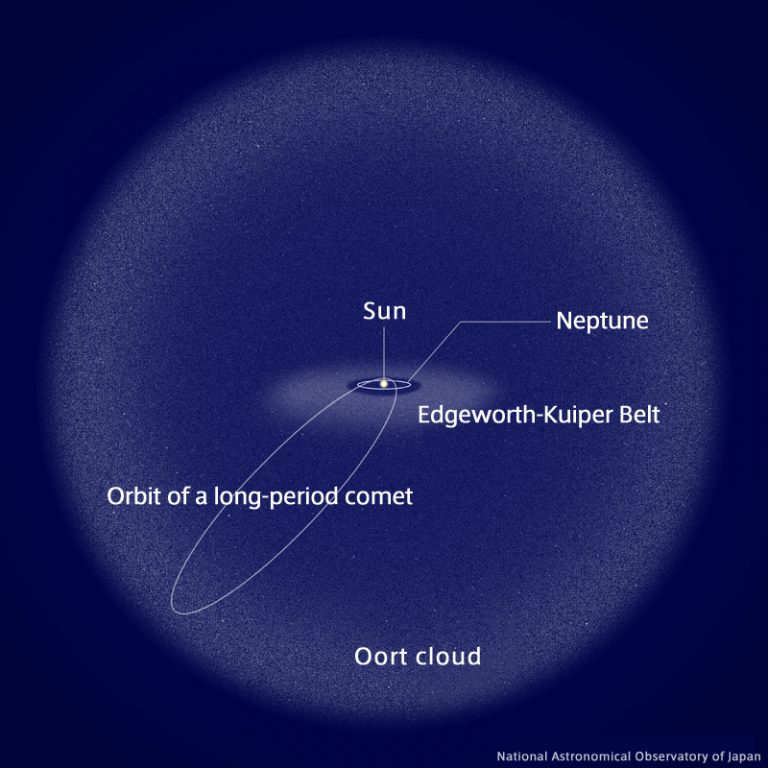Comets are characterized by their highly eccentric orbits and incredibly long periods. Comet Swift-Tuttle, for example, has an orbital period of 133 years. This is comparable to the orbital period of the furthest planet from the Sun, Neptune, which has a period of 165 years. From our perspective on Earth, 150 years is a long time. However, despite its seemingly incredibly long period, Swift-Tuttle is classified as a short period comet. Other short period comets include Halley’s Comet (~75 years) and Comet Encke (~3 years) Comets which truly take ages to orbit the sun are classified as long period comets, and can have periods ranging from 200 years to millions of years. The comet with the longest known period is C/2012 S4. It is classified as a “near-parabolic” comet due to having an eccentricity over 0.99, and its period is ~126 million years. While short period comets reside close to the solar system, sometimes even closer than Jupiter, long period comets like C/2012 S4 can be found far beyond the Kuiper belt. Long period comets are theorized to originate from the Oort cloud and may have been knocked out of the Oort cloud by the gravitational influences of passing stars.
- Comment
- Reblog
-
Subscribe
Subscribed
Already have a WordPress.com account? Log in now.

One response to “Comets and Their Periods”
It was fun reading. Is it possible to have any interstellar comet For example, comet which used to revolve around another star came to near to Sun? If it’s possible, do you think they are going to be the same as the other comets?
LikeLike